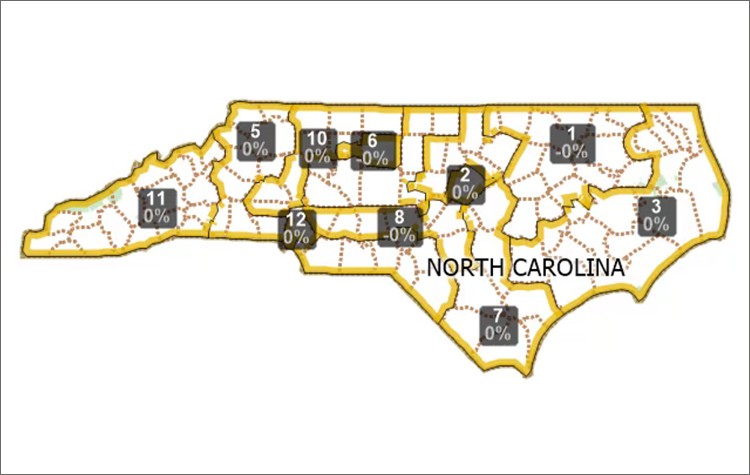Maptitude for Redistricting is the professional tool for political redistricting. It is used by a supermajority of the state legislatures, political parties, and public interest groups. Designed with the help of redistricting professionals, state legislatures, and political parties, Maptitude for Redistricting has the features redistricters want and is easy to learn and use. Use Maptitude for Redistricting as a replacement for BARD Better Automated Redistricting.
Autodistricts
When you
start working on a new plan, you may want to first automatically
create compact districts centered around existing districts,
communities of interest, residential locations of incumbents, or
other locations. In general, you choose locations
that represent what you want to be the geographical center of
each district. You may select how to balance districts by
determining the allowable percentage difference you want to
achieve before you quit. For example, if the total number for
the population of the districts is 100,000 individuals, defining
5% will result in no fewer than 95,000 individuals in each
district.
Ensembles
Gerrymandering is the setting up of electoral boundaries so that
a large number of seats will be held by one political group. But
how are we to measure that? One innovative method contrasts a
district proposal with an ensemble of other different proposals
utilizing analytical and mathematical methods. The outcomes of
the precinct-level elections are superimposed to decide how many
seats each group should have gained under that strategy, and the
results are plotted on a bell curve. If a particular plan on
this bell curve is an extreme outlier, it is considered strong
evidence that the plan may intentionally have been gerrymandered
to achieve a particular partisan outcome.

Autodistricts generated with Maptitude for Redistricting BARD replacement

Ensembles (simulations) created with Maptitude for Redistricting alternative to BARD
 |
“[The Florida Supreme Court] has acquired and utilized Maptitude software....Equipped with modern map analysis software and the parties' submissions, this Court will have the necessary tools to quickly and easily analyze compactness, boundaries, demographic information, and performance data without the need for extensive discovery or evidentiary proceedings and thus is able to effectively evaluate the data necessary to draw and consider alternative district configurations.” – The League of Women Voters of Florida |
 |
CASE STUDY: Creating Transparency, Openness, and Trust: Modern Approaches to Redistricting |
This map allows you to compare the Pre-2020 Texas congressional districts (36 districts) to the Post-2020 Texas congressional districts (38 districts)
Need to share and publish your redistricting plans and maps? Contact us for a demo now!
